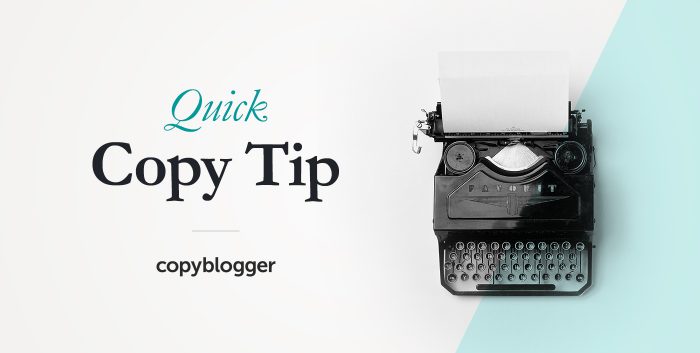
If you’ve studied copywriting, you know the purpose of the headline is to get people to click and start reading. And your opening copy needs to continue that momentum all the way to the offer or conclusion.
One way to do that is to make a bold, seemingly unreasonable assertion in your title or headline. A proclamation so jarring that the right person can’t help but keep reading, listening, or watching to see where you’re going with it.
As far as I can tell, copywriter John Forde (whose site tagline is, not coincidently, “Learn to sell or else …”) was the first to define the Proclamation Lead:
A well-constructed Proclamation Lead begins with an emotionally-compelling statement, usually in the form of the headline. And then, in the copy that follows, the reader is given information that demonstrates the validity of the implicit promise made.
This type of lead works for both sales copy and persuasive content. Let me give you a couple of examples.
Forde illustrates the Proclamation Lead with a direct mail report that is ultimately selling an alternative health newsletter. Written by Jim Rutz, the piece immediately startles and tempts the prospect with a bold statement:
Today you have a 95% chance of eventually dying from a disease or condition from which there is already a known cure somewhere on the planet. The editor of Alternatives would like to free you from that destiny.
The copy continues not by jumping to the offer, but instead by backing up the proclamation. In the process, the piece systematically removes the objections raised in the reader’s mind about the scientific validity of the bold assertions.
If you feel that example is a little too “direct marketing” for your audience, consider this from respected best-selling author Austin Kleon:
10 Things Nobody Told You About Being Creative
It’s the exact same technique for a completely different target market. The intent is to startle people interested in becoming more creative, while concurrently tempting prospects to further explore what Kleon means by “steal.”
The first example is copy designed to make a sale. The second example is content (a book) that is the product itself. But the reason why both “sell” is the same.
The key to these bold headlines and leads is the immediate emotional response provoked by the assertion. More importantly, that emotional trigger leads to immediate motivation to investigate further — and that’s what every copywriter aims to achieve right from the beginning.
That’s because implicit in the proclamation is a promise. In the Rutz and Kleon examples, you’re promised that you’ll learn about hidden cures to common diseases and the way creativity really works, respectively.
How do you come up with these types of bold beginnings? John Forde says they’re found via research, not conjured up out of the ether — and I agree.
For example, people often assume creativity comes from introspection, perhaps during long sessions of gazing out the window.
But if you research how artists throughout history actually work, creativity is much more about starting with something already out in the world — often the work of someone else — and making it into something new.
Austin Kleon discovered that truth, and then boiled it down to its shocking essence. After all, it was Picasso who famously said, “Good artists copy; great artists steal.”
That said, the proclamation approach is not always the right one for every situation. For example, I could have titled this article:
But that would have been lame, so I didn’t. There are plenty of other headline and lead approaches that also work well, so that headline wouldn’t be accurate or appropriate.
If you find a counterintuitive truth that’s relevant to your persuasive aim, however, you might just see if you can turn it into an almost unreasonably bold assertion that works wonders. But remember, don’t steal specific copy approaches (in the artistic sense) unless you’re sure you can perfectly tailor them for your audience or prospect.
The post Capture and Hold Audience Attention with a Bold Proclamation appeared first on Copyblogger.
No comments:
Post a Comment